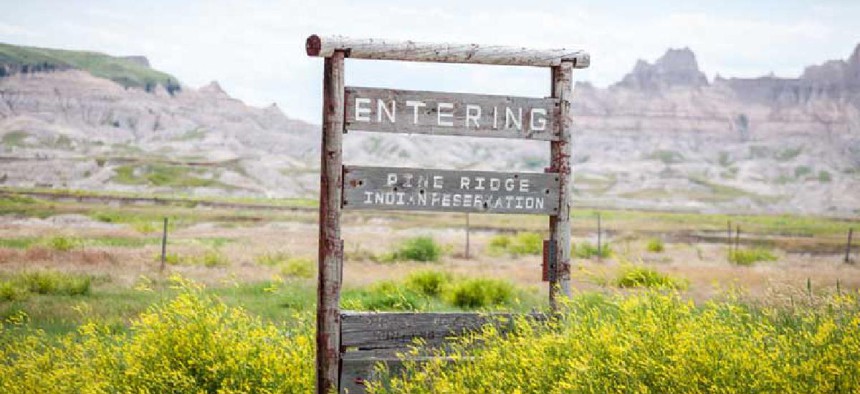FirstNet brings internet to tribal police

By connecting to the nationwide wireless broadband public safety network, the Oglala Sioux Police Department in South Dakota now has internet access as it patrols one of the largest land-based tribal reservations in the U.S.
Before becoming the first tribal community to implement FirstNet, officers at the Oglala Sioux Police Department in South Dakota had to go to police substations situated in towns throughout their 4,500-square-mile patrol area to file reports or connect to the internet.
Now all 32 of the department’s vehicles are equipped with Mi-Fi devices that connect to a cellular network and create a mini wireless broadband cloud or hotspot to provide internet access for the vehicles’ devices: Panasonic Toughbooks, printers, cameras and vehicle-locator GPS technology. Additionally, the 42 officers received wireless body-worn cameras and Google Android smartphones. All of those connect to the country’s first nationwide public-safety broadband network, which AT&T is building in partnership with the First Responder Network Authority.
“The push was, ‘Let’s keep them in the car. Let’s get them what they need. We need their presence, we need them available, we need them to show each area that they cover that they’re there,’” said Tawny Zimiga, IT supervisor at the Oglala Sioux Tribe Department of Public Safety. “Previously they had nothing in the cars. Everything was in the buildings.”
Now, officers report being able to drive across the entire Pine Ridge Reservation -- one of the largest land-based tribal reservations in the U.S. -- without losing connectivity, Zimiga said. What’s more, dispatchers can monitor patrols as they respond using the wireless and Mi-Fi connections.
In areas where officers used to lose coverage, they can now “just keep doing what they need to,” she said. “If an officer gets in trouble somehow or needs help, [dispatchers] can see the last location, or they can see exactly where they are in real time -- and that’s huge for us. The nearest backup person might be 30 to 40 miles away.”
The area’s rural nature and sparse, hilly terrain made it tough to install the infrastructure the department needed for “not just cellular, but any kind of connectivity in general,” she said. “There are some areas where people live that they can’t have a phone line connected to their house or residence. Everybody greatly depends on cellular.”
“Low population density across the reservation and its terrain have resulted in limited wireless broadband communications in parts of the reservation, making communication among tribal law enforcement and other first responders a challenge,” according to a June statement from the department. “Because of FirstNet, the expanded coverage and capacity will help give police officers and dispatch the ability to maintain contact to support emergencies.”
AT&T worked with the police department to determine which areas were most in need of radio access network infrastructure and then started deploying the network elements. The company has already installed some of the infrastructure and will be adding more cell towers, although AT&T said it “can’t share specifics” on how many or when.
Besides better connectivity and reliability, other benefits of FirstNet include cost savings. Zimiga’s department was able to close the four substations now that officers can file reports and stay connected from their cars. “It’s been a huge cost savings” for a department that was paying $2,000 a month to keep those substations open, she said. “It’s really been a huge step forward in technology for us.”
NEXT STORY: Customer experience playbook





